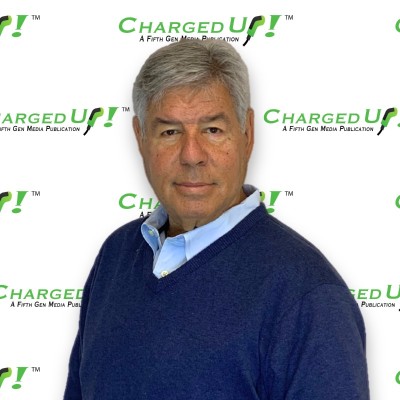GM’s $1.6 Billion EV Charge: What It Means for the Real Estate and Charging Market
- Rich Berliner

- Oct 14
- 3 min read
Updated: Nov 4
When General Motors announced this week that it would take a $1.6 billion charge to scale back its electric-vehicle plans, most headlines focused on investor pain and consumer frustration. But for commercial-real-estate owners, parking operators, and charging-infrastructure investors, the bigger story is what GM’s reset says about the maturing EV ecosystem—and where the next wave of opportunity may actually lie.
What Happened
GM disclosed that the charge stems from weaker-than-expected EV demand following the expiration of the $7,500 federal tax credit and the easing of emissions regulations. About $1.2 billion of the total represents an impairment on existing assets—factories, tooling, and contracts tied to production plans that no longer pencil out at current demand levels. The remainder covers supplier and commercial settlements. GM hinted that additional adjustments could follow as it reassesses its global EV strategy.
The takeaway: GM is not abandoning electrification, but is recalibrating its pace to match market reality.
Why It Matters Beyond Detroit
At first glance, a balance-sheet write-down in Detroit seems far removed from a commercial property in Dallas or Denver. But GM’s move is a weather vane for a broader shift that directly affects the business models supporting EV charging deployments across the country. Here's how:
Demand forecasting just got harder. Slower EV sales mean slower charger utilization growth. Many charging projects—especially at hotels, retail centers, and Class-A offices—were underwritten with optimistic usage assumptions. Property owners should expect a longer ramp to ROI and may need to revisit revenue-share projections with their operators.
Automaker pullbacks create supply-chain slack. Fewer vehicles rolling off lines frees up charging hardware, electrical contractors, and utility interconnection crews. That could shorten installation lead times and lower some equipment costs in 2026. Owners prepared to move during the lull can secure better terms.
Policy volatility is now a market risk. GM explicitly cited changes in federal policy. The lesson for site hosts: incentive programs can’t be treated as permanent. Projects should be structured to be cash-flow positive without subsidies, with incentives viewed as upside, not lifelines.
Real Estate’s Strategic Lens
EV charging remains an essential amenity and future-proofing investment, but the GM news is a reminder to approach it like infrastructure, not a tech fad.
Value the land, not just the load. The long-term winners will be properties positioned along strong feeder lines, near substations, or within fleet and logistics corridors. Those locations will attract consistent power-demand tenants—delivery, rideshare, municipal, and fleet operators—even if consumer adoption slows.
Diversify charging revenue streams. Mixed-use sites can offset slower retail traffic with fleet contracts or subscription charging, giving steadier utilization and predictable cash flow.
Expect consolidation among operators. If automakers are retrenching, some CPOs may follow. Before signing multi-year deals, owners should vet the financial health of charging partners and ensure hardware can be migrated to another network if necessary.
Keep Your Eye on the Second-Wave Market
GM’s charge could mark the transition from the hype phase to the infrastructure discipline phase of electrification. Slower consumer growth doesn’t mean retreat—it means professionalization. Here's what we can expect:
Grid-integrated charging and microgrid deployments to gain favor as property owners chase energy independence.
Stronger partnerships between utilities, REITs, and operators to manage capacity and monetize dwell-time power use.
Regional policy divergence, as states like Colorado and New York expand credits even as federal incentives fade.
For owners and investors, the message is clear: stay in the game, but play it smart. The next wave of value won’t come from splashy ribbon-cuttings—it will come from sites that combine power, parking, and predictable demand.
Sidebar: Three Questions to Ask Yourself to Be Sure Your EV Charging Strategy Is Built for the Long Term
1. Am I planning for market cycles, not headlines?
GM’s $1.6B charge shows how fast sentiment can swing when incentives or demand shift. EV growth is real—but uneven. Is your plan resilient enough to weather slower quarters or policy changes without derailing ROI?
2. Does my business model work without subsidies?
Federal and state credits have fueled early adoption, but they won’t last forever. Have you stress-tested your charging economics—power costs, utilization, and payback—against a future with no incentives?
3. Am I building for the next wave of users?
Even if consumer adoption cools, fleet, logistics, and rideshare electrification are accelerating. Does your site design—power capacity, layout, and software—anticipate that shift toward heavier, higher-throughput usage?






Comments